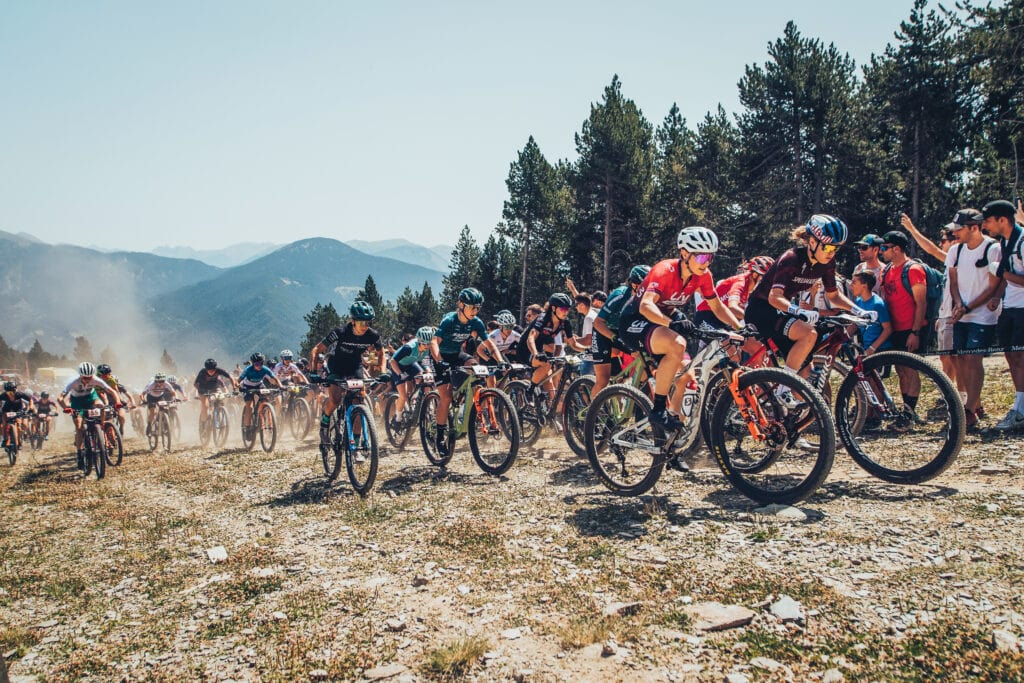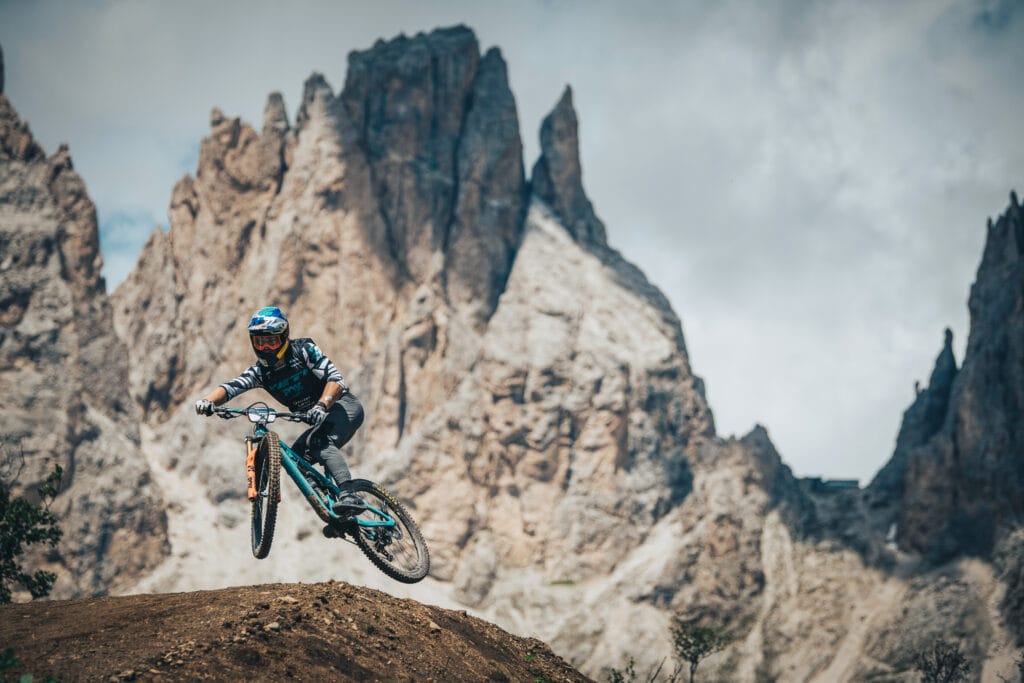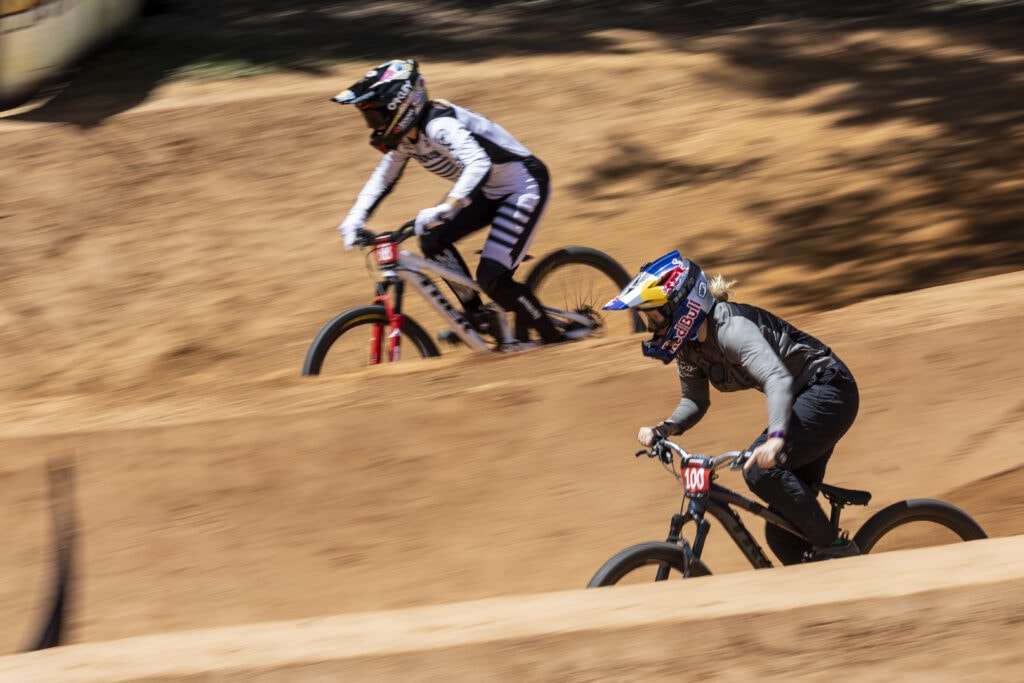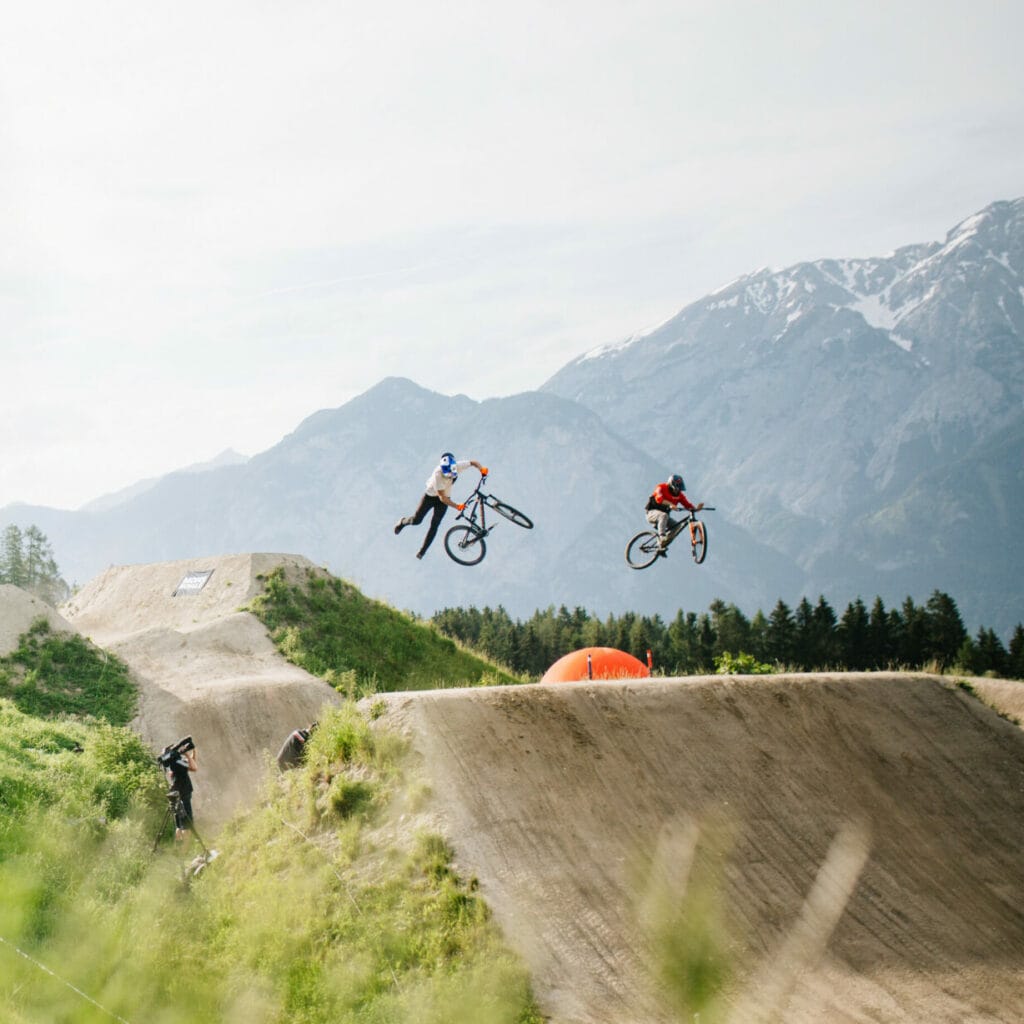Mountain biking offers a wide variety of riding disciplines – and even more race formats to determine the best riders. This article is a snapshot of each major racing discipline but also covers more niche ones. Read on for a quick guide to their rules, requirements, and the skills needed to perform.
Cross-Country (XC)
XC is the original mountain bike race discipline and is the only one represented in the Olympics. There are no less than two formats raced at the World Cup level. With a couple of lesser-known XC formats.
Cross-Country Olympic (XCO)
XCO stands as the pinnacle of endurance mountain biking with it being represented in World Cups and in the Olympics. Athletes are challenged with a mass start race that tests both their climbing power and descending skills.
The format involves multiple laps on a technically demanding circuit, with steep inclines and exhaustive descents. Riders must strategically manage their energy across laps, balancing speed with the need to conserve strength for the race’s latter stages.
Strategy and Skill: Success in XCO racing hinges on a unique combination of endurance, technical skill, and strategic racecraft. XC racers need to be tactically smart, making split-second decisions about when to push ahead or hold back, and how to navigate the pack dynamics during the race.

Cross-Country Marathon (XCM)
XCM takes endurance mountain bike racing to the extreme, with grueling courses often exceeding 100 kilometers. This format tests not just the physical endurance of the riders but also their mental resilience and adaptability to varying terrains as the laps are much longer – if not a stage race.
In XCM, racers compete over vast distances, encountering a mix of terrains. They must maintain focus and determination over long hours, often in solitude.
Racing Dynamics: Unlike “shorter” races, XCM events involve a significant element of strategy. Riders must be adept at pacing themselves, conserving energy for crucial segments.
Cross-Country Eliminator (XCE)
This uncommon but exciting Cross Country race format involves short, intense races with elimination rounds. Riders compete in heats, with the slowest riders in each heat being eliminated until only the fastest remain.
Downhill (DHI)
World Cup Downhill racing is considered the Formula 1 of MTB: fast, high-consequence and spectacular. It’s a pure adrenaline rush for fans and riders with a single finals run – all or nothing.
Competitors race individually against the clock, hurling down steep and technical courses as fast as possible. The focus is on speed, control, and power. But a race weekend is long so riders also have to bring good endurance.
Downhill bikes are specially designed for this type of riding, equipped with robust frames, big suspension, and burly tires designed for maximum grip on rough terrain. Riders need not only exceptional bike-handling skills but also the ability to read the track quickly, making split-second decisions at high speeds.

On knife’s edge: Success in DHI requires not just physical skills but also mental toughness, as riders must constantly push the limits of speed and control on the edge of what both they and their bikes can handle. Going over those limits often has dire consequences.
Enduro Racing (EDR)
Enduro has only recently been elevated to World Cup status in 2023 – Formerly EWS (Enduro World Series). It’s also the most beginner-friendly format for amateur riders to enter as many local clubs host their own Enduro events.
Enduro racing is often compared to a rally car racing on two wheels. This format combines the endurance aspects of cross-country with the rush of downhill racing.
Riders face multiple timed downhill stages (with occasional uphill sections), linked by time-boxed (but not timed) uphill transfer stages. This blend demands not only downhill skill but also the stamina to reach each starting point – racing the entire day.

Race structure and strategy: Typically, an Enduro event spans one or two days, consisting of 3 to 5 timed stages – World Cups have been shortened to single day events. The cumulative time of the downhill stages determines the winner, adding a layer of strategy as riders must balance speed with consistency and energy preservation.
There’s also an e-bike variant for enduro (EDR-E) at some World Cup events.
Additional Formats
Four-cross (4X): This format is similar to BMX racing. Four riders descend simultaneously on a short, obstacle-laden course, with the fastest advancing to the next round.
Bike Trials: While a stopwatch is involved, trials is focused on the slow negotiation of incredibly difficult (normally unrideable) obstacles, both man-made and natural. Touching the ground with a foot incurs penalties, making balance and control key.

Dual Slalom: Two riders head to head simultaneously on parallel courses. Both riders ride both lanes with the fastest combined time advancing in the bracket-style format. Tracks are generally smooth with turns ans jumps.
Speed and Style: Think dual slalom with tricks. Riders are scored on their time and difficulty of tricks. A great spectator race usually held at big events.

Stage Races: These races span several days, with each stage akin to a marathon race. The rider with the lowest cumulative time across all stages is crowned the winner. Stage races test both speed and endurance over a prolonged period.
24-Hour Races (XC or DH): As the name suggests, these endurance events last for 24 hours. The objective is to cover the greatest distance or complete the most laps within the time frame. There are team and individual rankings.

